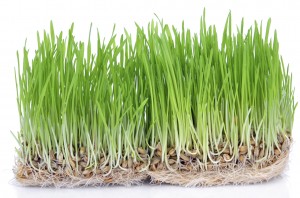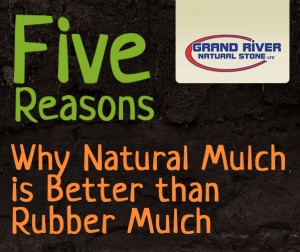Your Spring Landscape Clean-Up Checklist
The first day of spring (March 20) is about a month away. The perfect time to take stock of any work that needs to be done.
At Grand River Natural Stone, we want to help.
We’ve put together a helpful spring landscape checklist of tasks you should get started on sooner, rather than later.
1. Freshen up stone surfaces
Winter weather can play havoc on your interlocking pavers and patio stones.
But getting them back to spring-ready shape is quite easy:
- Rake: Any aggregates or gravel that escaped from between your stones should be raked back into place.
- Refill: Empty spaced between flagstone joints should be filled with polymeric sand or stonedust.
- Remove & replenish: If you find your pavers have lifted out of place, remove them and put down new base material before setting them back in their proper spots.
- Restore: Use a pressure washer to clean dirt, debris and dust from your patios and walkways.
Thinking of using Flagstone in 2016?
Download this FREE guide on how to use it inside and outside the house.
2. Prune away dead or damaged tree & shrub branches
If any branches died or were damaged over the winter, make sure to prune them back to live stems.
Doing this keeps your trees and shrubs:
- Healthy: Dead branches are ground zero for decay and disease. Getting rid of them prevents sickness from spreading to other areas.
- Beautiful: Removing sick, worn or overgrown branches keeps your trees and shrubs looking their best and ensures they keep their natural shape.
- Safe: Spring weather is unpredictable. Pruning prevents dead branches from falling on sidewalks, driveways, cars or even people during heavy wind or rainstorms.
One more tip: for any branches which are more than ½” in diameter, use a handsaw or other cutting tools instead of hand pruners.
3. Get the lawn ready for grass seeding
In colder climates (like Southwestern Ontario), grass usually starts growing in April.
But early spring is a good time to prepare your lawn’s damaged or thin areas for spring seeding.
Here’s what to do:
- Remove: Any turf or grass that’s been damaged by salt, plowing/shoveling or winter disease should be taken away.
- Work: Apply a ½” layer of topsoil compost to keep the new grass seed hydrated and in place, thus boosting its germination rate.
- Start: Begin applying your grass seed landscape accessories once you notice flowers blooming in your area.
4. Freshen up your mulch
Check the depth of your mulch. Chances are it isn’t as deep as it should be.
Plus organic mulches made from chipped wood have either decomposed or been wiped away during the winter.
Touching up your mulch doesn’t have to be a very time-consuming task:
- Fluff: Use a metal rake and fluff up your mulch. If possible, level it out across your garden or flower beds.
- Measure: Use a ruler to calculate the average depth of your mulch. Ideally, you want at least a 2” layer of mulch with a maximum of 4”
Read our blog to learn 5 reasons why natural is better than rubber when it comes to mulch.
Let us help you tackle your spring landscape checklist
The earlier you take care of your spring landscaping chores, the sooner you’ll be able to enjoy your backyard and garden.
So whether you need advice, products or information, Grand River Natural Stone has you covered.
Contact us today for a FREE quote on any of our products or to speak with one of our landscaping pros.




